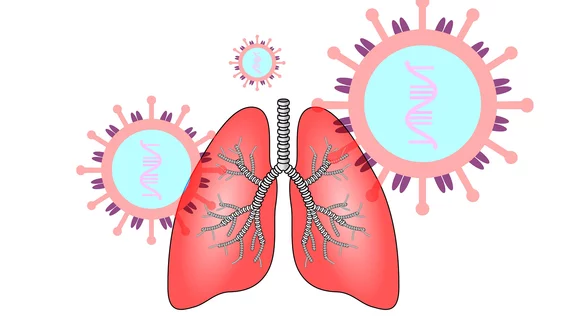A new neural network-based algorithm proved capable of measuring pulmonary disease severity on radiographs taken from patients with COVID-19, authors reported Wednesday. It may serve as a tool to help clinicians triage those with the disease.
That’s according to researchers from Massachusetts General Hospital, who trained their convolutional model on thousands of images and tested it on chest x-rays from various hospitals. The resulting pulmonary x-ray severity, or PXS score, aligned with radiologists’ mark-ups and follow-up interpretations.
Writing July 22 in Radiology: Artificial Intelligence, the authors say their automated method can help track the disease and predict intubation or death.
And first author Matthew D. Li, MD, with MGH’s biomedical imaging center, and colleagues see a number of additional uses for PXS scoring during the current pandemic.
“PXS score can potentially be used to improve existing and new COVID-19 machine learning models that account for other variables like vital signs, lab values, and co-morbidities,” the authors wrote. “Other potential applications include radiologist workflow optimization, where CXRs with more severe findings can be interpreted earlier, and hospital resource management, where the PXS score can help with resource allocation (e.g. prediction of future ventilator need).”
To reach their conclusions, Li et al. trained their Siamese neural network technique using “weakly supervised” pretraining on nearly 160,000 anterior-posterior images; they used transfer learning on 314 CXRs from pandemic patients. After this, they evaluated it on an internal set of 154 images and an external repository of 113.
In addition to automated PXS scores aligning with manual scoring, the neural network accurately predicted which patients required intubation and who would die from their symptoms within three days of admission. For the latter, it produced a 0.80 receiver operating characteristic area under the curve score.
Chest x-ray is limited in its ability to detect abnormalities associated with coronavirus, but can be useful for assessing the severity of pulmonary infection and evaluating changes over time, the authors noted.
And aside from a handful of limitations, including the fact that a majority of patients were from urban areas of the U.S., Li et al. believe PXS scoring can be “rapidly” scaled and deployed.
“With further validation, the score could be incorporated into clinical treatment guidelines to be used together with other clinical and lab data,” the authors concluded. “Beyond the COVID-19 pandemic, this automated severity score could also be modified and applied to other continuous disease processes manifesting on chest radiographs, like pulmonary edema, interstitial lung disease, and other infections.”

